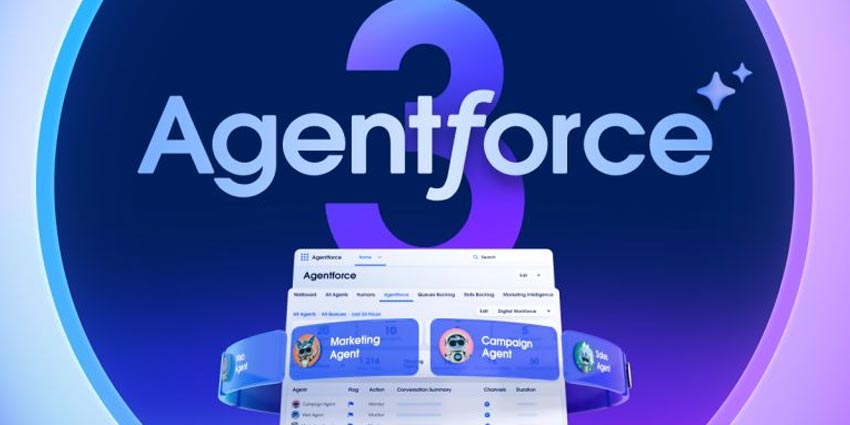Designing exceptional customer experiences is a complex task for organisations. To better understand the challenge, MyCustomer spoke with Professor Mohamed Zaki, the deputy director of Cambridge Service Alliance and course leader of Data-Driven Design for Customer Experience (CX) at the University of Cambridge.
This interview explores the difficulties organisations encounter in delivering seamless and personalised CX and the importance of leveraging data and analytics to overcome these challenges.
The power of data utilisation
For Mohamed, much of his research focuses on utilising data to improve customer service. He explains that problems arise when organisations design strategies for digital, physical and social experiences in silos.
“There is no integrated way. And in essence, that leads to a lot of problems because customers deem a brand as one brand across different channels. So they would like consistency in the experience.”
Many organisations struggle to track and monitor customers across channels effectively or utilise analytics to extract valuable insights. This hinders their ability to manage the customer experience and leverage AI capabilities.
“They have all this data. Still, they don’t have the mechanism to follow the customers across channels and monitor what’s happening, you know, to enable them to take the right strategic actions.”
He continues: “It’s not capturing the right information. They can’t manage it well.”
Investing in the right capabilities requires strong business cases and a customer-centric approach. Data plays a crucial role in designing experiences, managing customers, and capitalising on new opportunities. Another challenge Mohamed highlights is getting leadership buy-in.
“Organisations need a lot of business cases to enable them to become culturally customer-driven firms, getting the right resources from the top management.”
Organisations need a lot of business cases to enable them to become culturally customer-driven firms.
He continues: “Now, in the digital world, we’re starting to see that with customer experience, you can differentiate your business model. It’s something other than your traditional business model as established. Your new service often heavily relies on the experience part.
“So, how we go from designing the right experience from customer management will enable us to capitalise on this, and typically, it’s using data as an engine to enable us to do so.”
Maturity matters
What are the challenges for organisations to get this right? According to Mohamed, one big challenge is the level of maturity. Primarily product-centric organisations are shifting towards a more service and solution-based approach, whether in the B2B, B2C, or public services sectors.
“Now they are thinking about the experience at the heart. We call it a culturally driven customer experience organisation. This means that everyone, from the CEO to the employees delivering the service, is dedicated to providing the best experience to customers.”
Technology is another big challenge, even for established organisations.
“People have problems with websites. I’m talking about established firms here, like in the automotive industry.”
Here’s an example: Imagine you are searching for a specific part for your vehicle on a website but need help locating it. Now, if you were to search for it on Amazon, the experience might be different. As an e-commerce platform, Amazon provides a seamless and user-friendly interface. It helps you quickly find the desired product and considers your previous behaviours and preferences. Over time, Amazon’s system learns from your interactions and recommends products that align with your interests.
“It will push you to the right product and service.”
Launching services without attaining a sufficient level of maturity can have significant consequences. When introduced prematurely, services may lack the necessary refinement and robustness to meet customer expectations and deliver a satisfactory experience.
If you’re not doing it at a mature stage, it could flip back on you.
“We saw this with some of the chatbots. Microsoft, for example, Tay. It became abusive, right? And Microsoft had to shut down the service on the second day. If you’re not doing it at a mature stage, it could flip back on you, and it can have a firestorm of reputation hazards,” Mohamed says.
Navigating the paradox of choice
“Another big challenge is the paradox of choice. You’re opening new digital capabilities, and you try to use a lot of services to engage with your customers.
“Typically as human beings, they can’t process a lot of information and sometimes struggle to make a decision. This is why they need some help. They look on the internet; they search, you know, they ask friends and so on. So if an organisation offers a lot of services or a lot of journeys, customers may stumble.”
If an organisation offers a lot of services or a lot of journeys, customers may stumble.
The advancement of digital technology and AI capabilities has created the promise of moving away from a standardised experience towards personalisation. The idea is to leverage the information gathered about customers to offer tailored experiences that align with their preferences and needs. By utilising the insights gained through data analysis, organisations can better understand their customers and provide them with experiences that are more relevant and customised.
“That’s what the customers want. They want specific configurations based on their preferences. It’s a difficult game for a lot of these firms. A lot of established firms are still thinking about how they’re going to do that kind of personalisation,” Mohamed says.
He continues: “Another big part is – who is your customer? We found a problem with the invisibility of the customer.”
Safeguarding customer data
Additionally, Mohamed highlights how security remains an ongoing concern. We frequently hear about companies experiencing data breaches or ransomware attacks, highlighting the importance of establishing robust security measures. The right infrastructure is essential to facilitate safe and secure customer data management.
“Otherwise you will have regulatory problems specifically if you are operating in the EU,” Mohamed warns.
“This is just a list of challenges that I think most organisations, specifically established firms, are really stumbling upon.”








